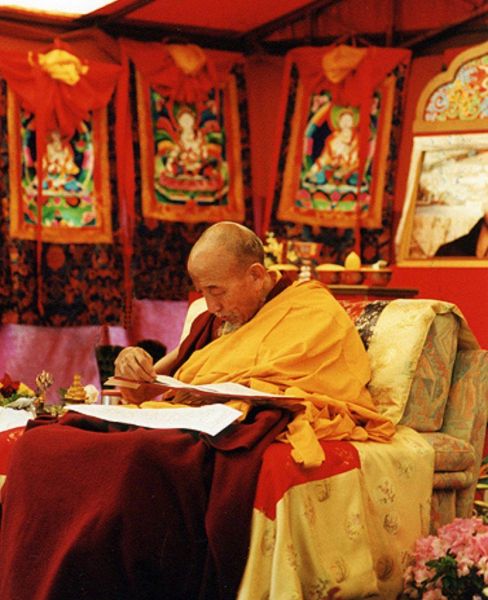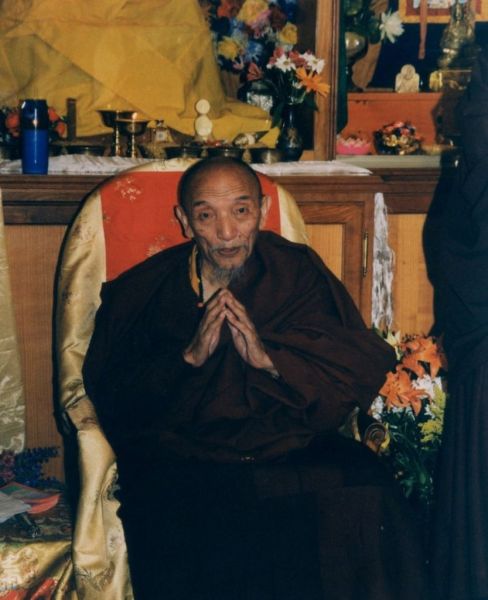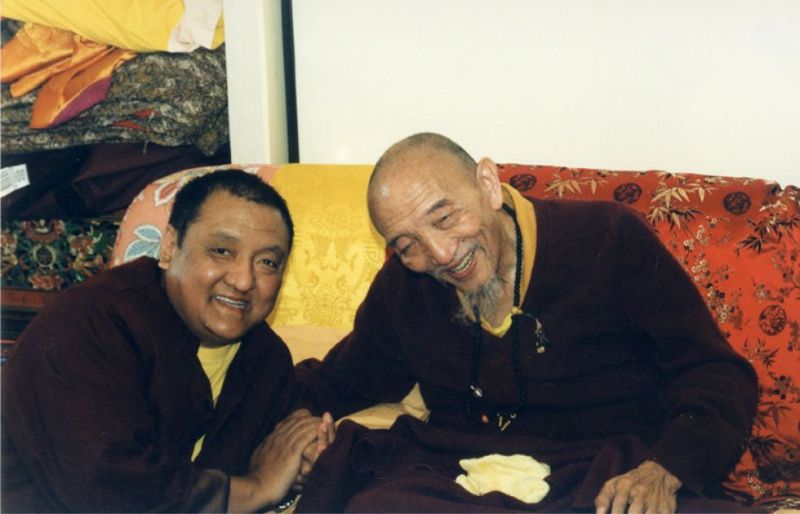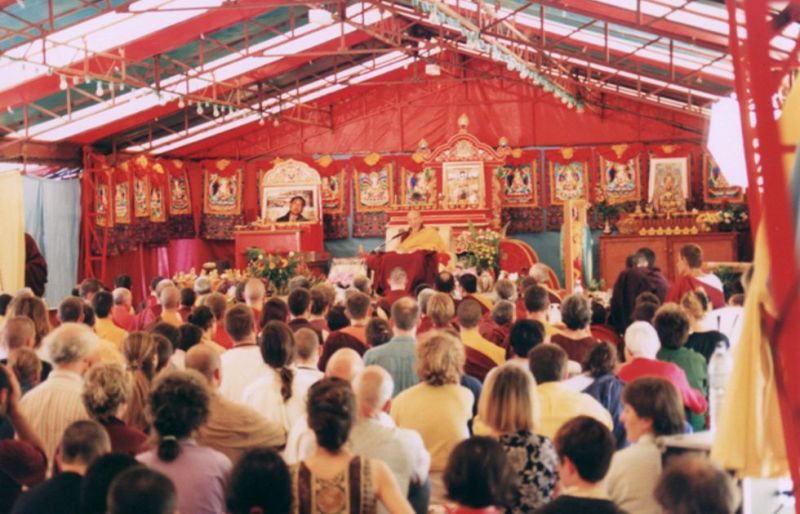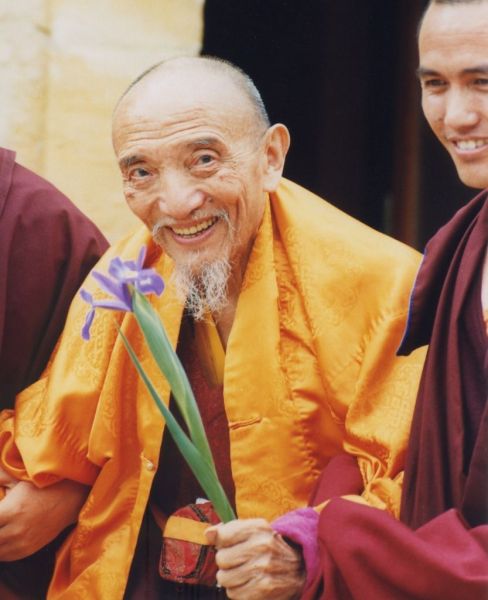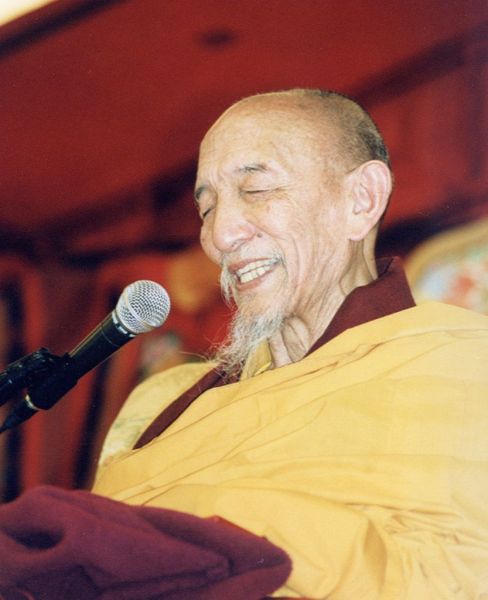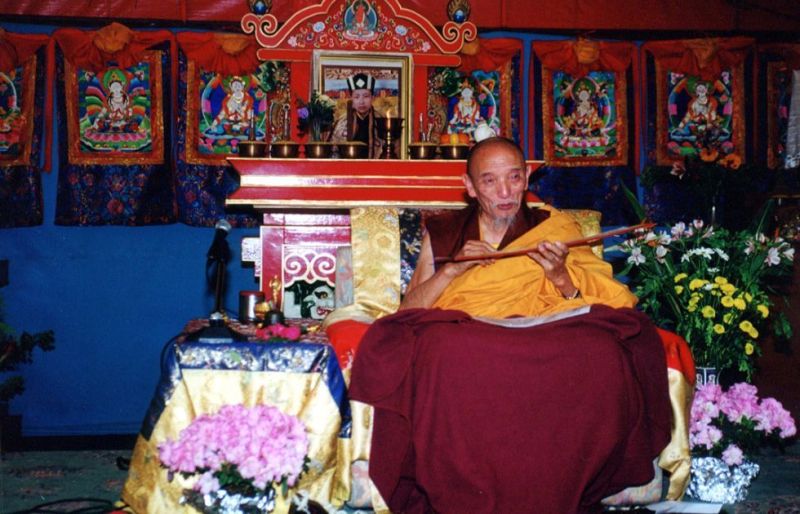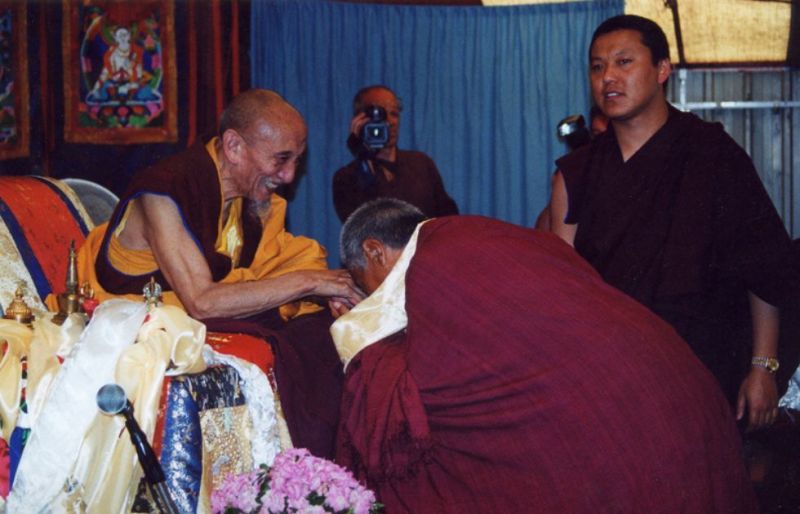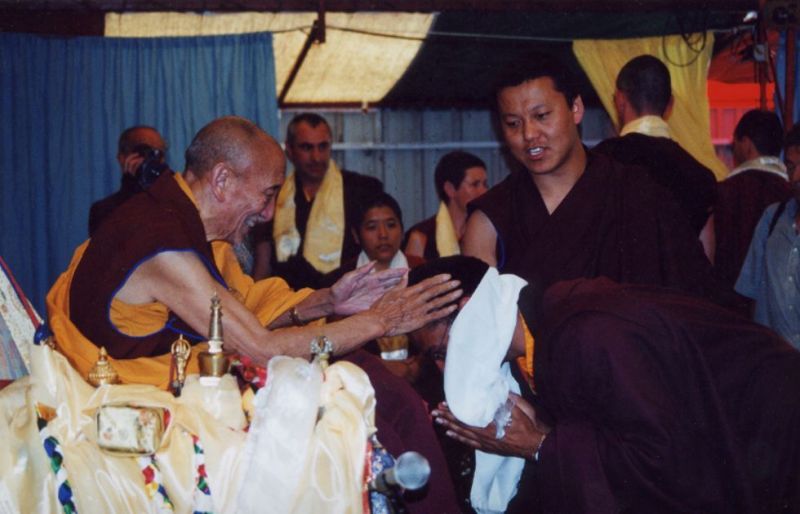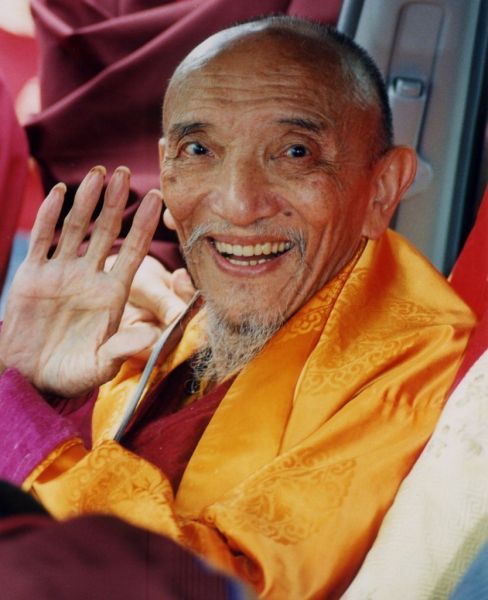After transmitting key teachings to Thaye Dorje, His Holiness the 17th Karmapa at Dhagpo Kundreul Ling in the Auvergne, the eminent Sakya master Chögye Trichen Rinpoche made a stop in Dordogne to confer the empowerments of One-Thousand-Armed Chenrezig and Green Tara on May 4 and 5, 2000.
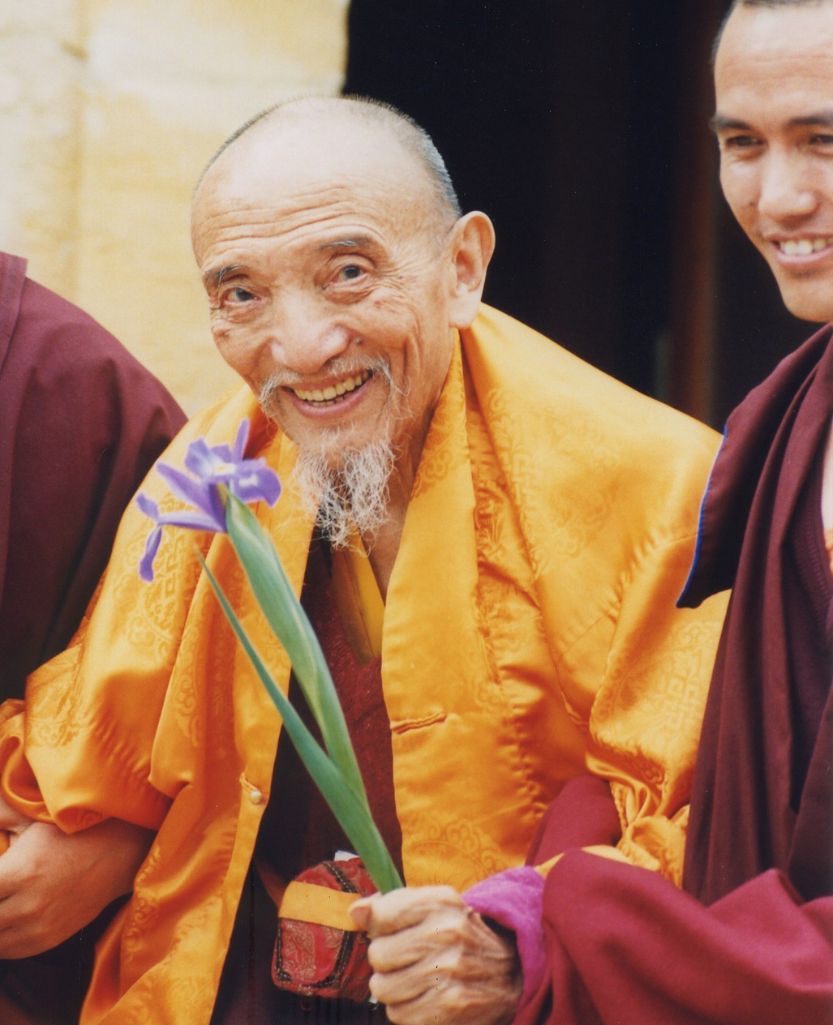 To the sound of the gyalings, Chögye Trichen Rinpoche, aged 81, is accompanied to the tent where prays as the practitioners take their seats.
To the sound of the gyalings, Chögye Trichen Rinpoche, aged 81, is accompanied to the tent where prays as the practitioners take their seats.
Before beginning to give the empowerments themselves, Rinpoche tells the story of Gelongma Palmo, who is at the origin of the Nyungne, the meditative practice of Chenrezig, the Buddha of compassion with eleven faces and one thousand arms. Then he recounts the story of Tara, who is said to have been born from a lotus that emerged from Chenrezig’s tears of compassion. He then evokes Chandragomin, a great Indian pandit from the fifth century and teacher at Nalanda Monastic University. He explains that Chandra means moon, Gomin means the one who makes the effort. He recounts that Chandragomin took ordination for one day but eventually kept it for the rest of his life, hence his name.
Chandragomin himself practiced Tara meditation and composed several praises. Called The Liberator, Tara is the personification in female form of the spontaneous wisdom of all the buddhas. Her meditation protects from fear, removes obstacles for oneself and others and leads to enlightenment. The practice of Nyungne, a powerful means of purification, has taken place every year at Dhagpo Kagyu Ling since 1980
Having done his part as a teacher, Chögye Trichen RInpoche invited disciples to offer a mandala in order to request empowerment.
I clearly remember when he came to Dhagpo. The first thing is that he gave empowerments in the rotunda of the time, and the floor was quite rickety,” a practitioner recalls. “We had set things up as best as we could, but it wasn’t great. And yet, when we were in his presence, all that was forgotten and my feeling was that the frail, elderly body of this man we perceived was only a tiny part of who he really was and in fact we were embraced by his blessing. This man was much vaster than his appearance! Naturally, spontaneously, he established an awakening environment.
Something else marked me: when he left, we were in the courtyard, the door to the lamas’ house was open and he was standing up, whereas usually he was in a wheelchair. He was standing with a flower in his hand, it might have been a daffodil. The effect this had on the people gathered to greet him was huge! Some melted into tears. The fact that he was holding this flower was both so simple and so naive in a way, and at the same time very meaningful in its connection with an offering, something very rich. It had a real impact on the mind.
The visit of such a master is a source of profound blessing for practitioners present and for the anchoring of Buddhism in the West.
These photos come from our archives or were collected as part of the research for Dhagpo Kagyu Ling’s 50th anniversary. We have not been able to identify all the authors. The use of these photos is solely for informational purposes within the context of Dhagpo Kagyu Ling’s 50th anniversary celebration. Their use is limited to this event and our website and is not for commercial purposes.
These photos come from our archives or were collected as part of the research for Dhagpo Kagyu Ling’s 50th anniversary. We have not been able to identify all the authors. The use of these photos is solely for informational purposes within the context of Dhagpo Kagyu Ling’s 50th anniversary celebration. Their use is limited to this event and our website and is not for commercial purposes.


